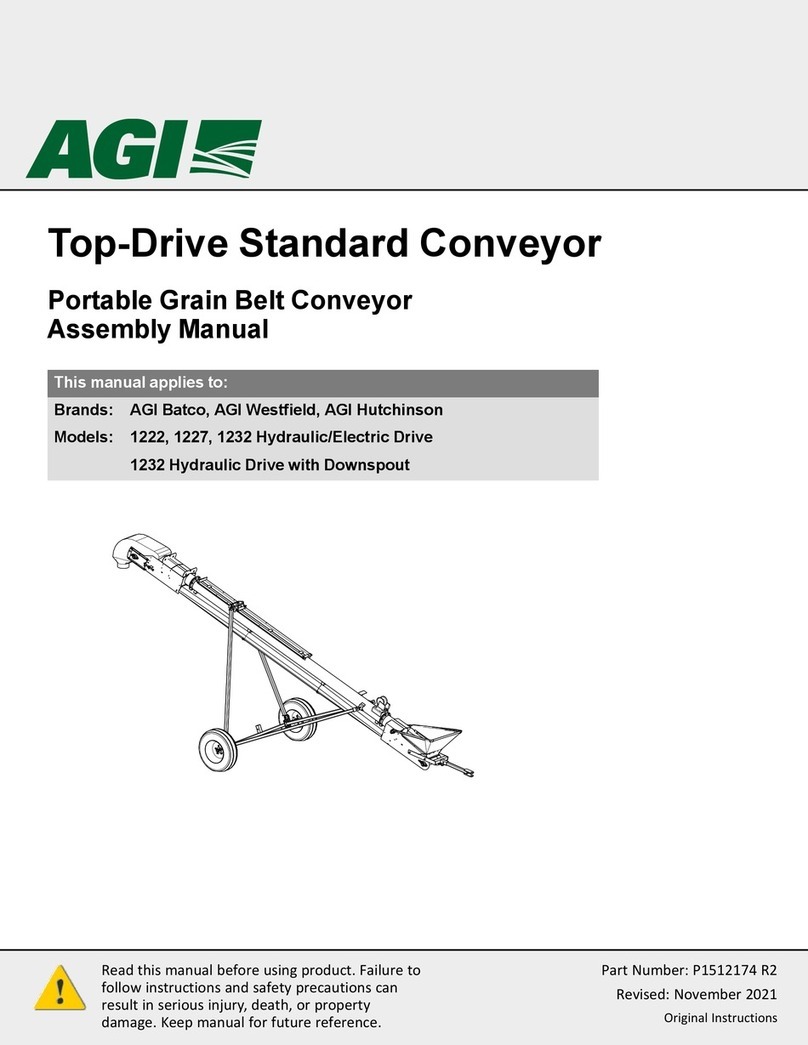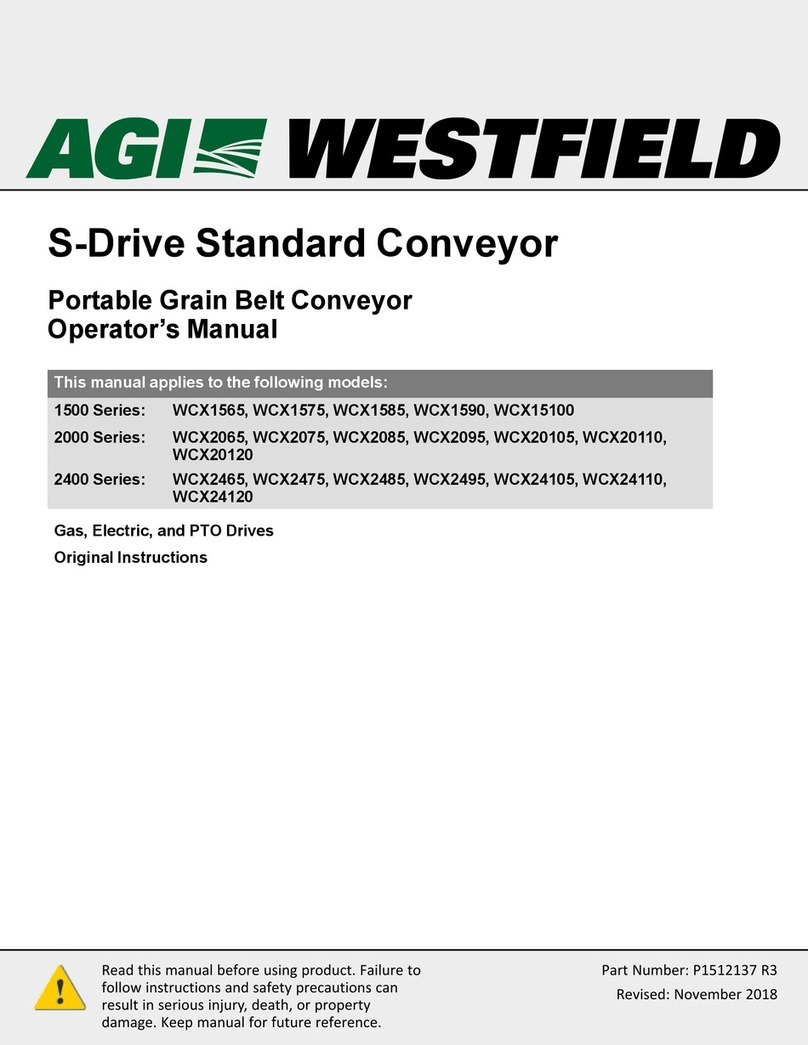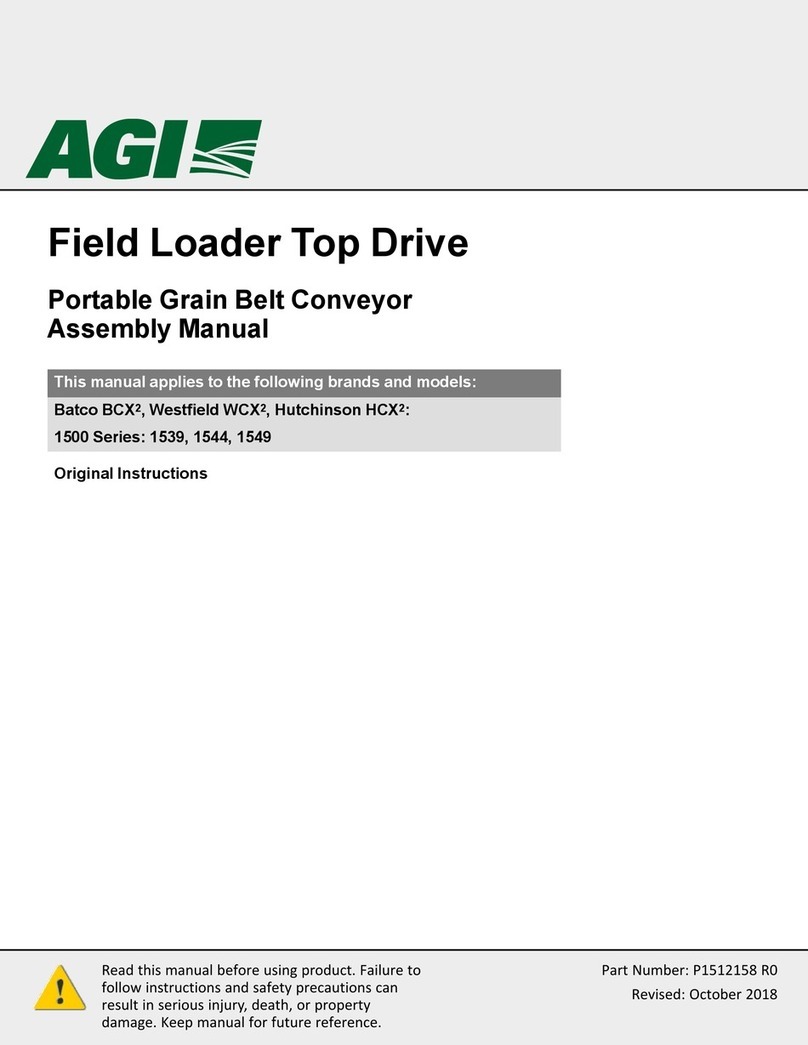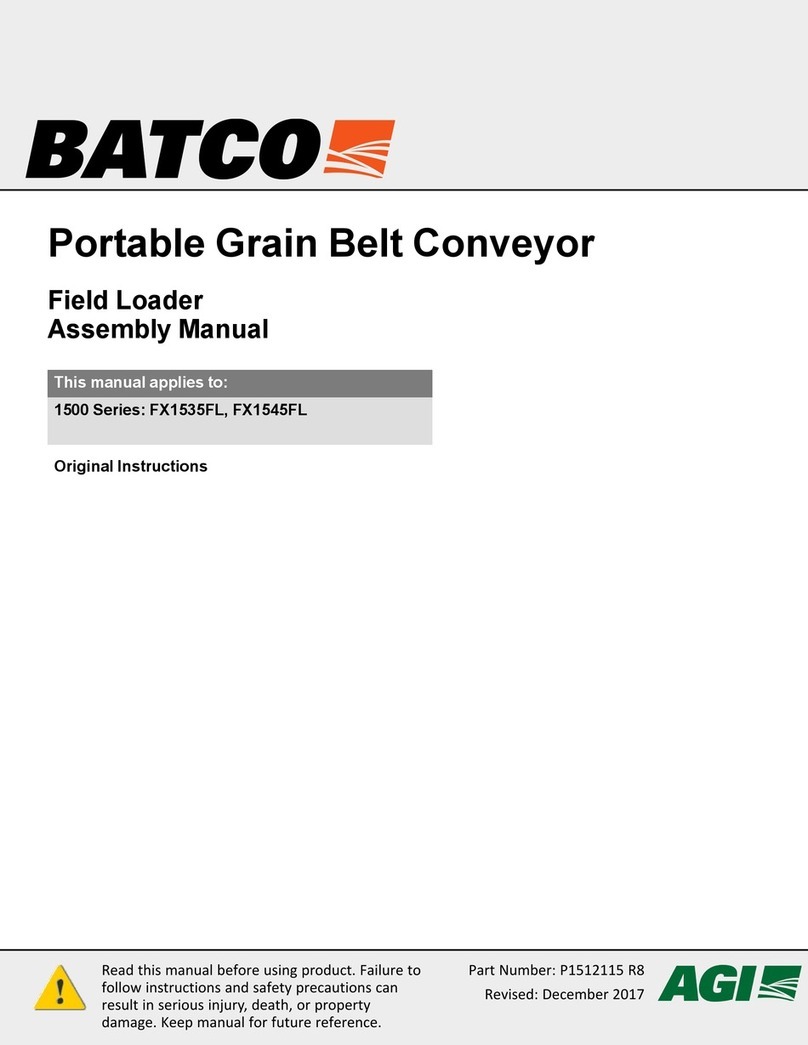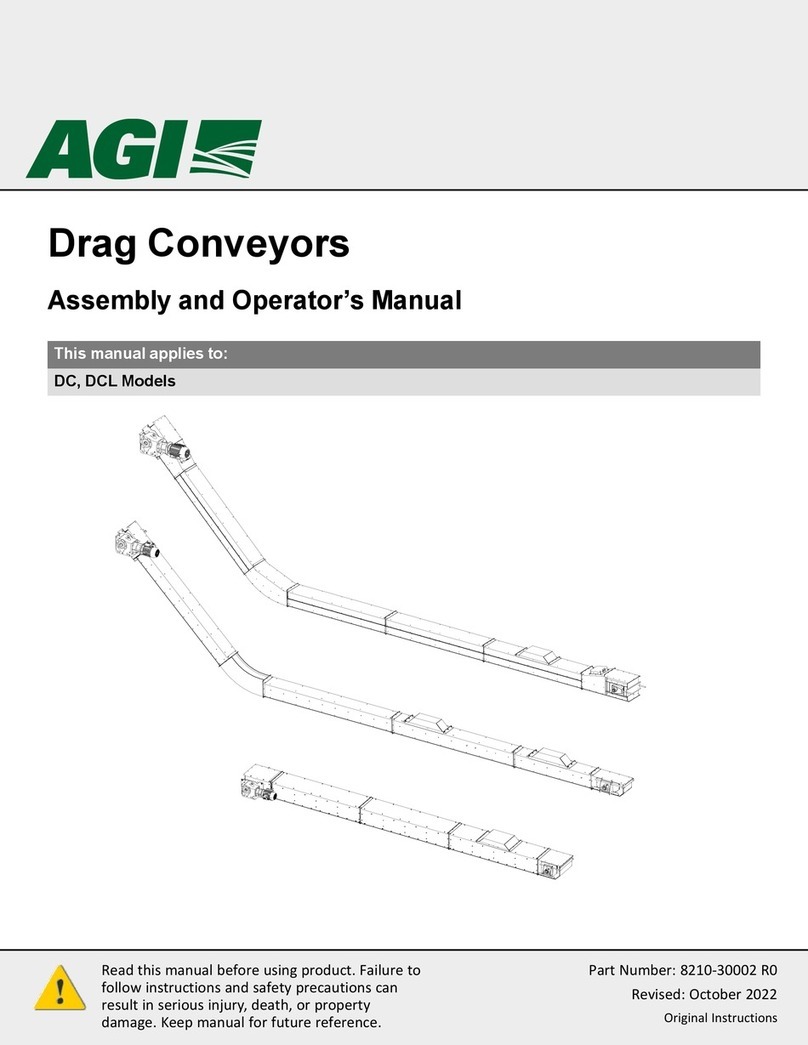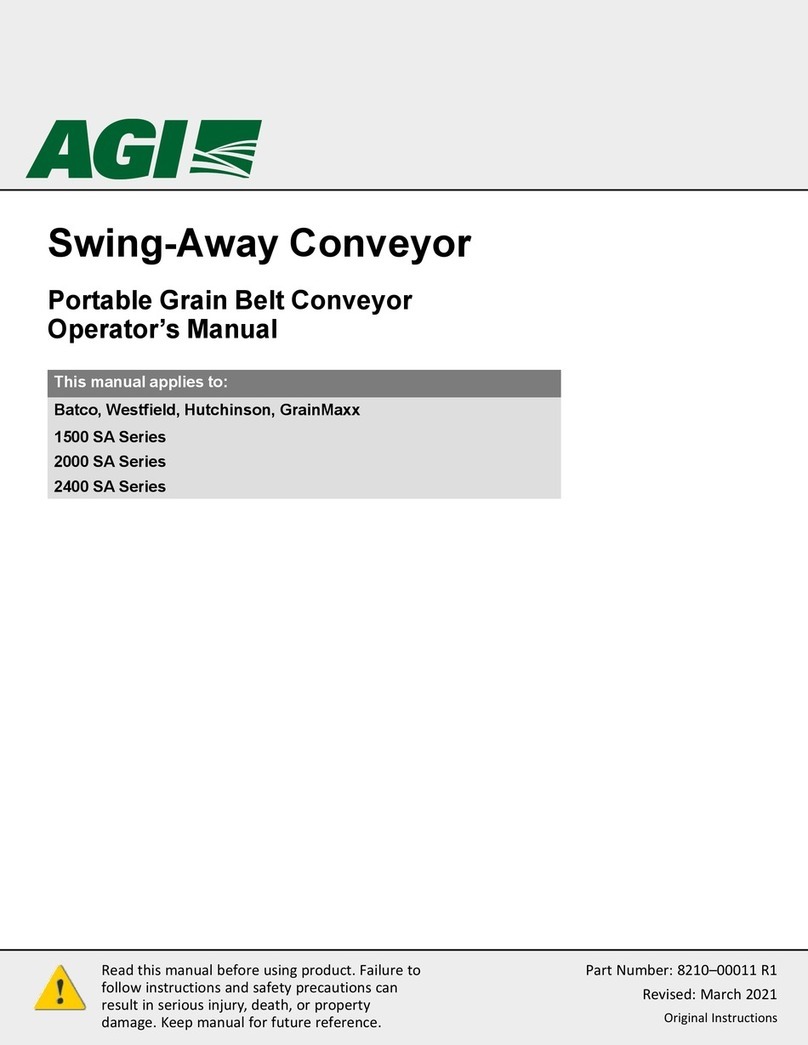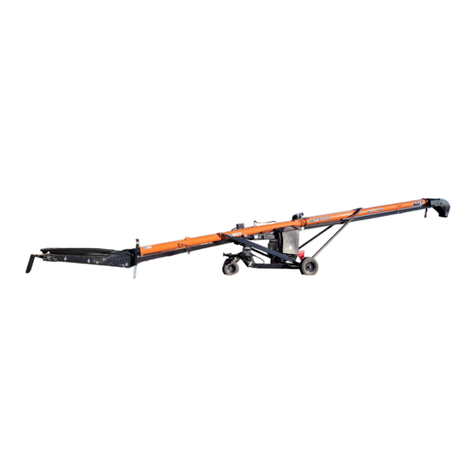
TABLE OF CONTENTS
HIROLLER - BELT CONVEYORS
HIROLLER, MINI ROLLER, LOROLLER & HILIFE
4P115506 R3
5. Installation .......................................................................................................................... 35
5.1. Pre-Installation........................................................................................................ 35
5.2. Head End & Tail End Trunking Installation............................................................. 35
5.2.1. Head Section Mounting ............................................................................ 35
5.2.2. Tail Section Mounting............................................................................... 37
5.2.3. Trunking Installation.................................................................................. 37
5.2.4. Tail Section Back Cover Removal & Installation....................................... 39
5.3. Inlet/Loader Installation .......................................................................................... 40
5.3.1. Skirt Installation ........................................................................................ 41
5.3.2. Discharge Considerations......................................................................... 42
5.4. Belt Installation....................................................................................................... 42
5.4.1. Pre-Installation.......................................................................................... 42
5.4.2. Belt Squaring & Cutting ............................................................................ 42
5.4.3. Splice Protector / Wiper Cleats................................................................. 46
5.4.4. Lubrication................................................................................................ 48
5.4.5. Belt Tension Procedure............................................................................ 48
5.4.6. Normal Idler Wear..................................................................................... 51
5.5. Leveling Tail Take-Up Section................................................................................ 52
5.6. V-Plow Adjustment................................................................................................. 52
5.7. Cover Installation.................................................................................................... 53
5.7.1. Made-To-Length Covers........................................................................... 53
5.7.2. Cut-To-Length Covers.............................................................................. 54
5.7.3. Cover Hardware........................................................................................ 55
5.8. Drive & Motor Final Check Before Start-Up............................................................ 56
5.9. Hazard Monitoring Devices .................................................................................... 56
5.9.1. Motion Sensor........................................................................................... 56
5.9.2. Plug Switch............................................................................................... 58
5.9.3. Belt Alignment Monitors............................................................................ 59
5.9.4. Belt & Pulley Alignment Monitors.............................................................. 68
5.10. Final Checklist...................................................................................................... 74
5.11. Test Start-Up........................................................................................................ 76
5.12. Final Inspection During Operation........................................................................ 76
6. Operation ............................................................................................................................ 79
6.1. Pre-Operational Checklist....................................................................................... 79
6.2. Conveyor Drive & Lockout Procedure.................................................................... 79
6.3. Operating Procedure.............................................................................................. 79
6.3.1. Start-Up and Break-In............................................................................... 79
6.3.2. Operating with a Full Load........................................................................ 80
6.3.3. Shutdown.................................................................................................. 80
6.3.4. Operating Tips.......................................................................................... 81
6.3.5. Plugging.................................................................................................... 81
